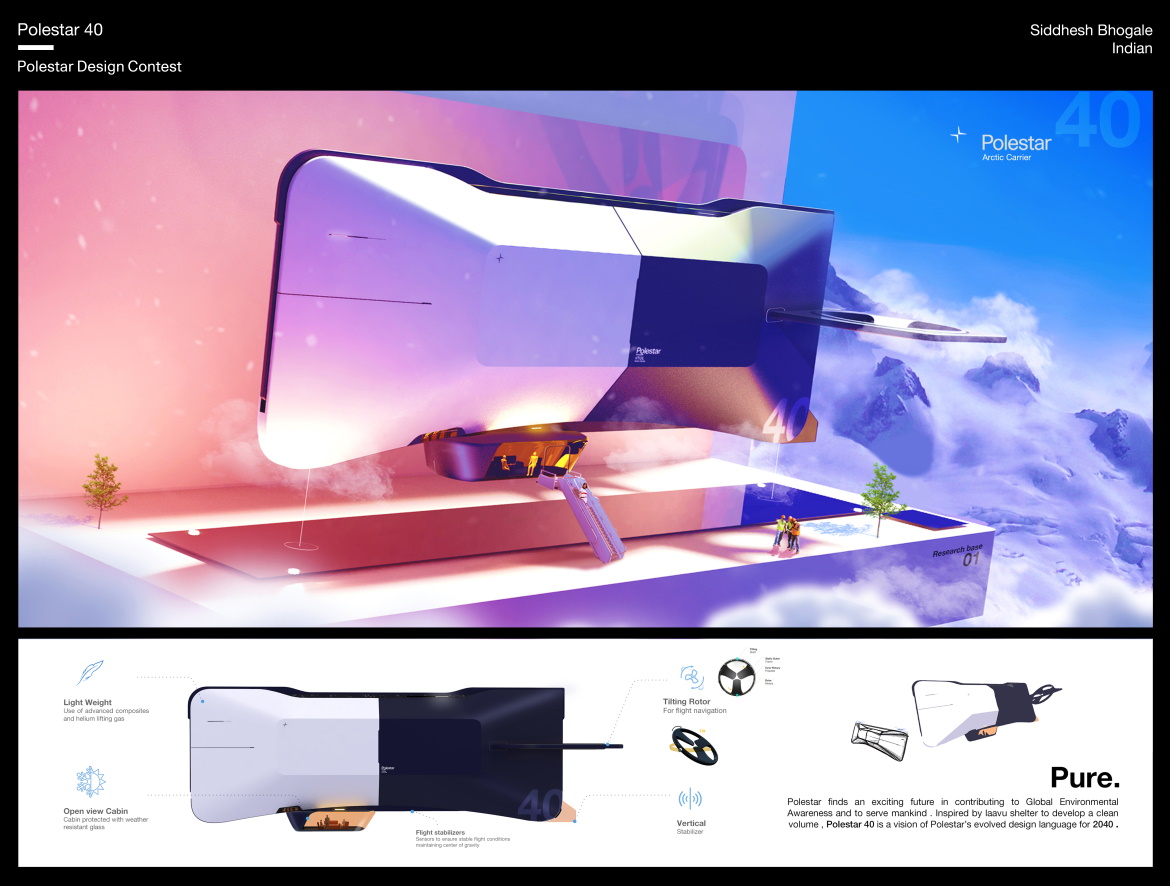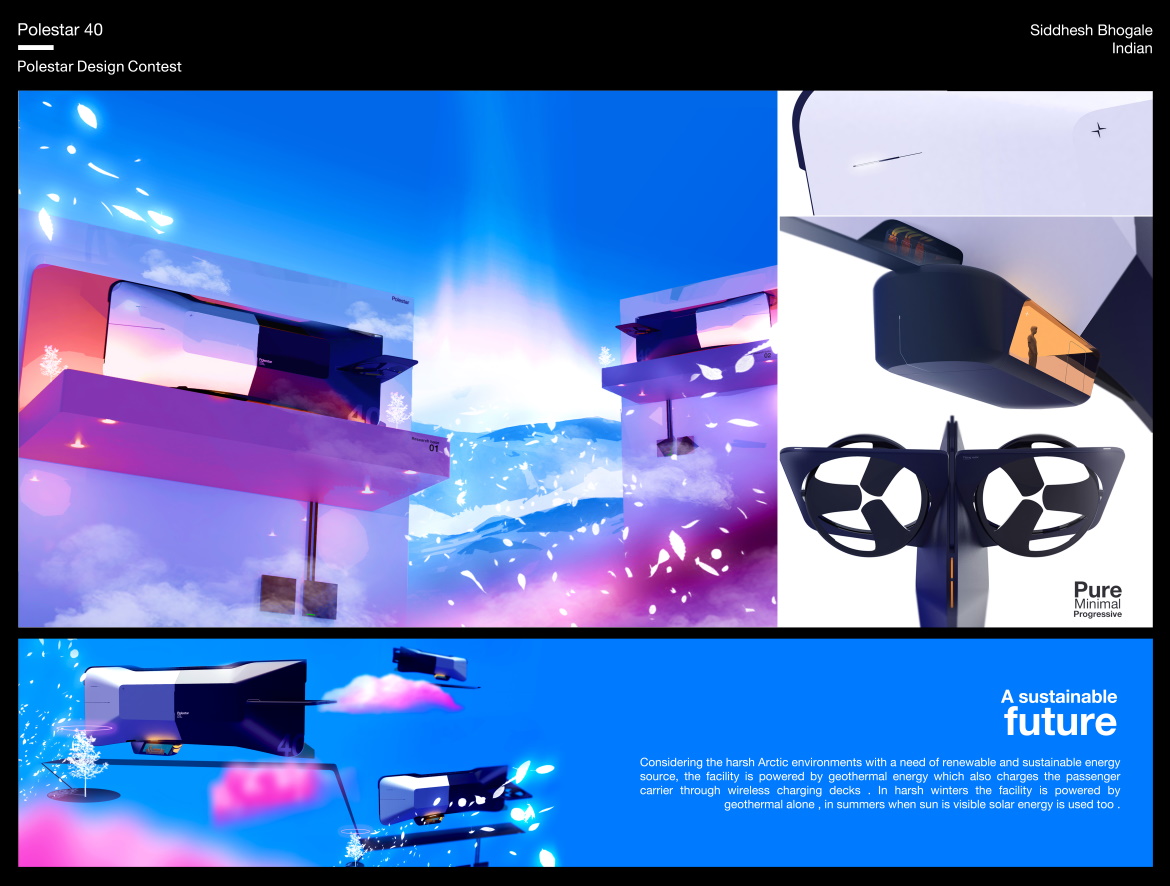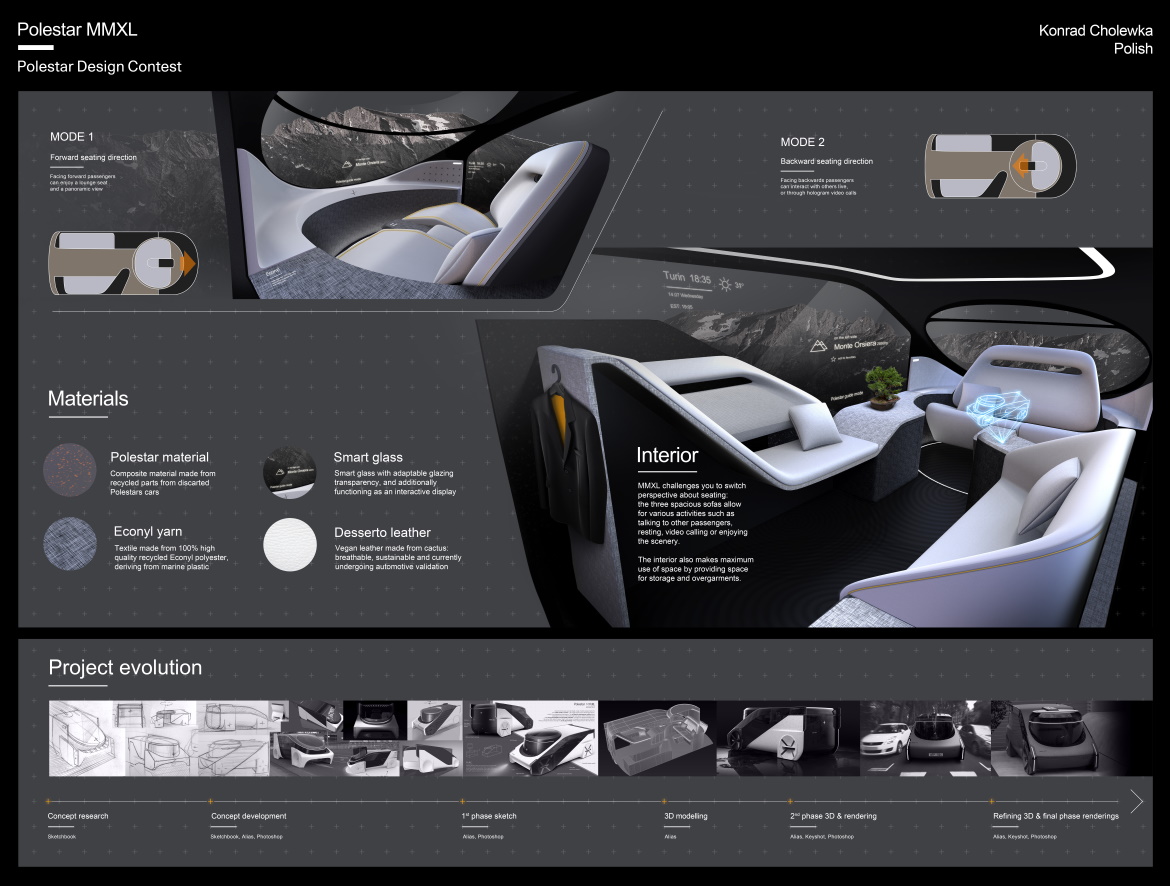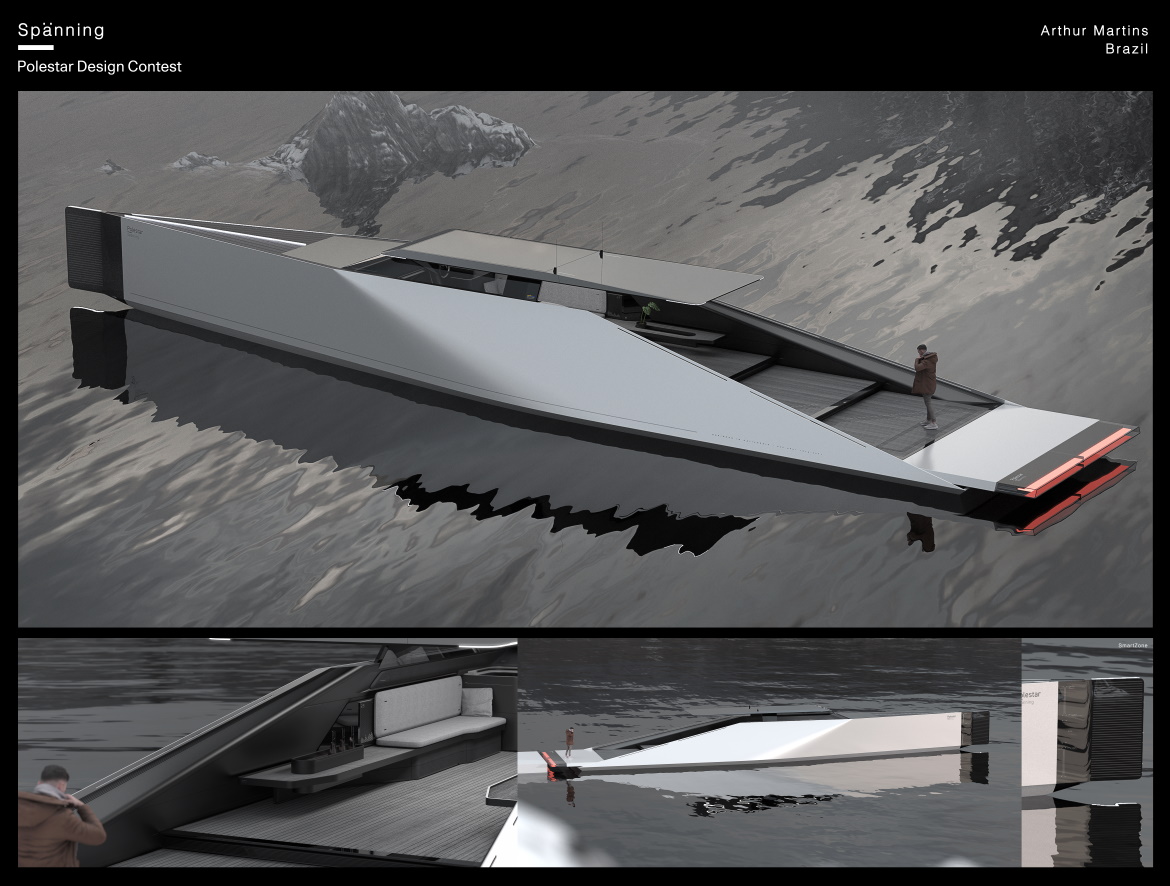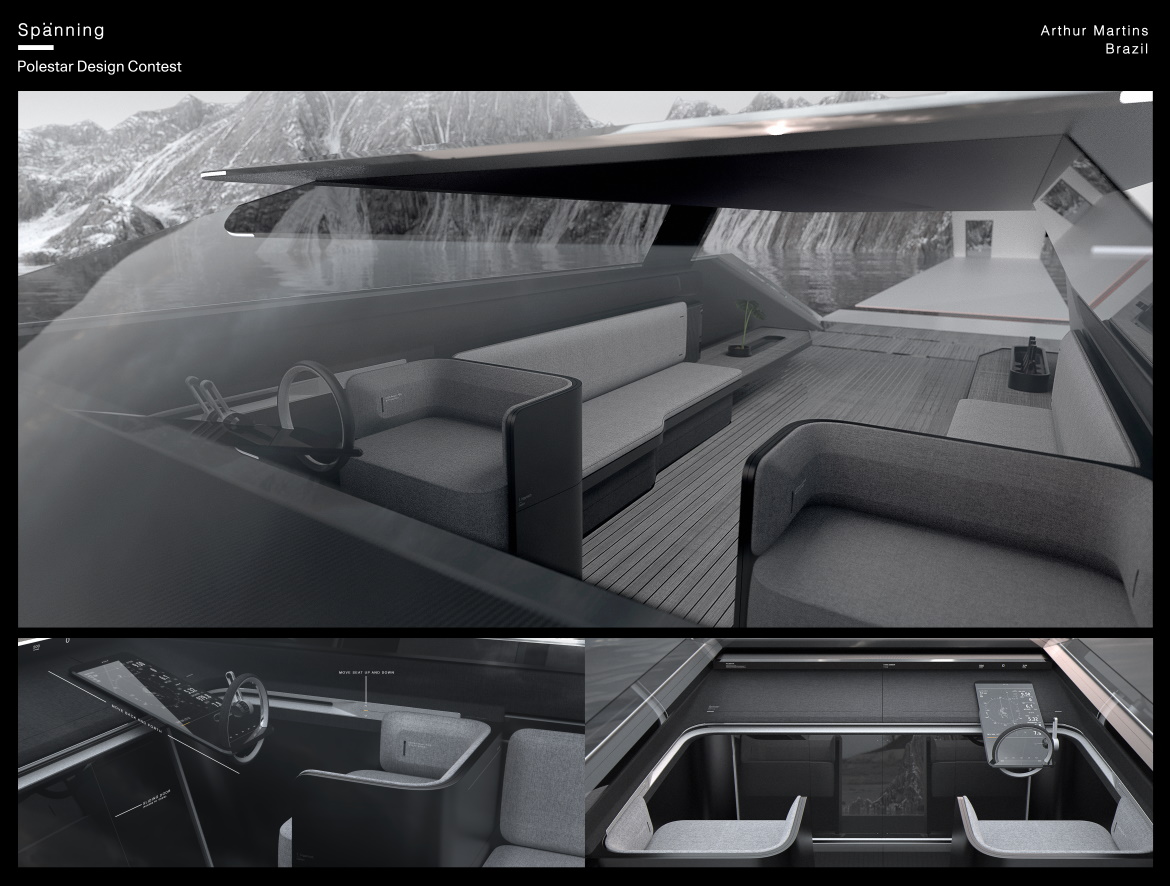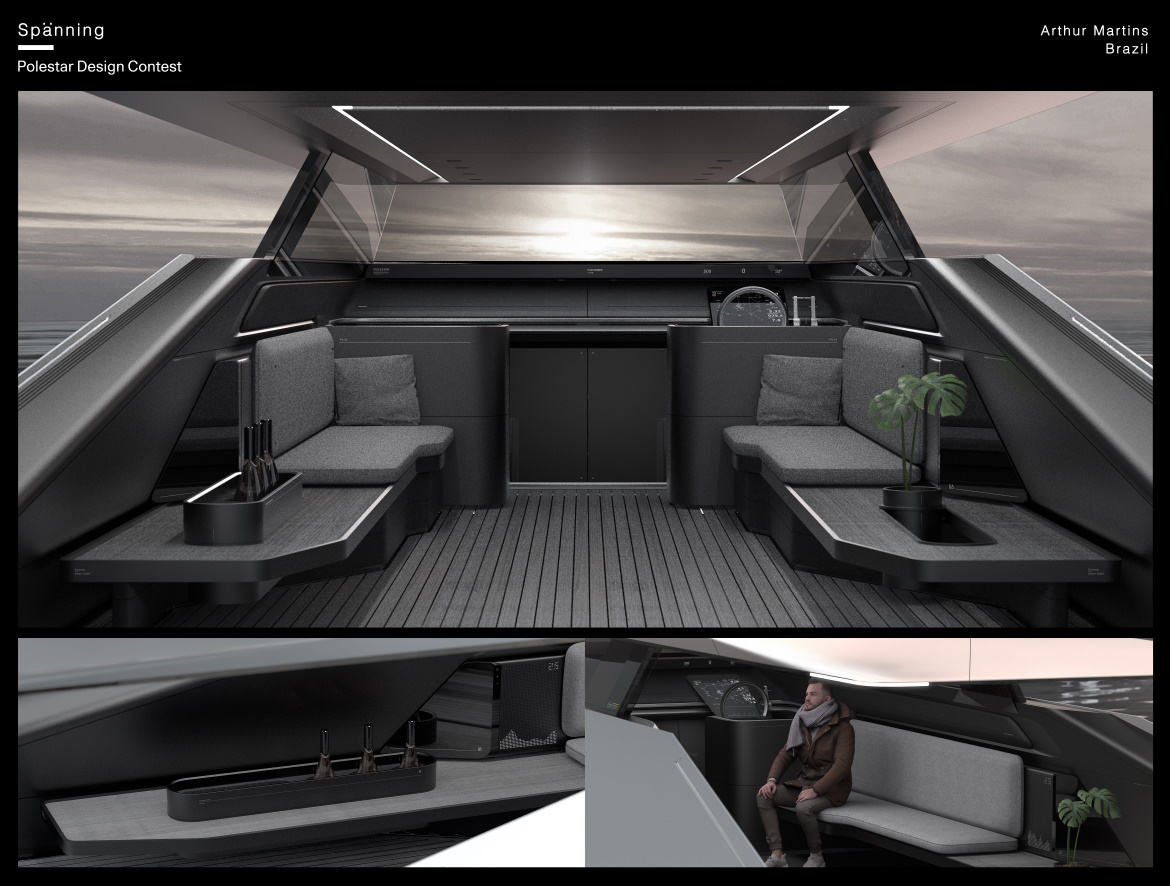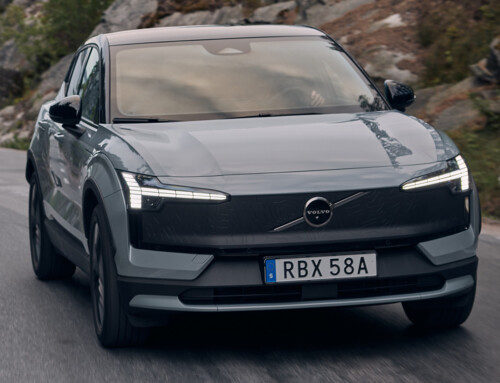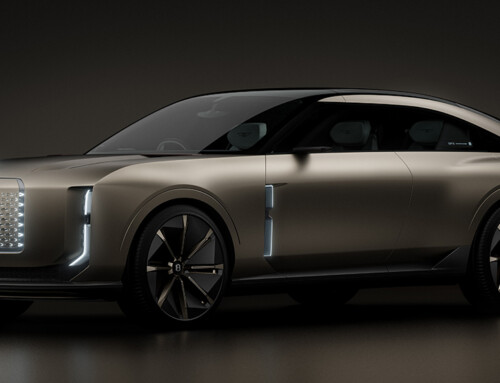The winners of Polestar’s first annual Design Contest have been chosen. Their designs will soon embark on a global exhibition, being displayed virtually and in Polestar Spaces around the world. The Polestar Design Contest invited both professional and student designers to create a vision of future mobility with the theme of “purity”. They were asked to present a new Polestar that exhibits the purest of designs; a vision of Polestar’s evolution in the year 2040 that follows the Polestar design philosophy. Specifically, the vision did not need to be a car.
Winner of the professional category is Konrad Cholewka from Poland with his “Polestar MMXL” design – an inclusive, autonomous pod with a flexible interior design, pure in its combination of two geometric shapes. The design boasts a cabin, accessed through a universally accessible single rear door, is arranged more like a living room than a normal car to enable easy socialising. It also features a front bench seat which can be rotated 180 degrees to face the direction of travel.
The student category has been won by Siddhesh Bhogale from India with his “Polestar 40” design – an airship that looks ahead 20 years by combining Polestar design with a 21st century aviation approach. Siddhesh Bhogale has designed a Polestar that takes a new form of airship that combines 21st-century Vertical Take-Off and Landing (VTOL) concepts with the larger, classic, lighter-than-air vehicles. The design looks ahead twenty years to when electric power could be used to power airships, and the means to generate electric power off-grid in remote locations would likely be possible.
An honourable mention goes to Arthur Martins from Brazil for his “Spänning” electric yacht, the design of which shows the potential for an electric cruiser that offers a true alternative to conventional craft, just as Polestar cars do in the automotive world. The simple and brutal form contrasts with the flowing water around it to make a strong impact. Such a silent and pure craft would offer a unique travel experience. The inclusions of sensors would enable autonomous piloting to enhance safety and route guidance, and the monochrome colour palette and the bow side nameplate are classic Polestar design cues.
Entrants first submitted sketches, which were assessed by Polestar’s design department. The 13 finalists were then invited to remote coaching and guidance from Juan Pablo Bernal, Polestar Senior Design Manager, and Maximilian Missoni, Polestar’s Head of Design, where they were given expert advice and insight into the world of automotive design. The final phase involved the shortlisted finalists creating fully realised digital models of their concepts which were then judged by the designer panel. The winning designs will now be brought to life as 1:5 scale models and first shown in a virtual exhibition before beginning a global tour in Polestar’s launch markets. They will appear at Polestar Spaces in China, Europe and North America, according to local regulations.

